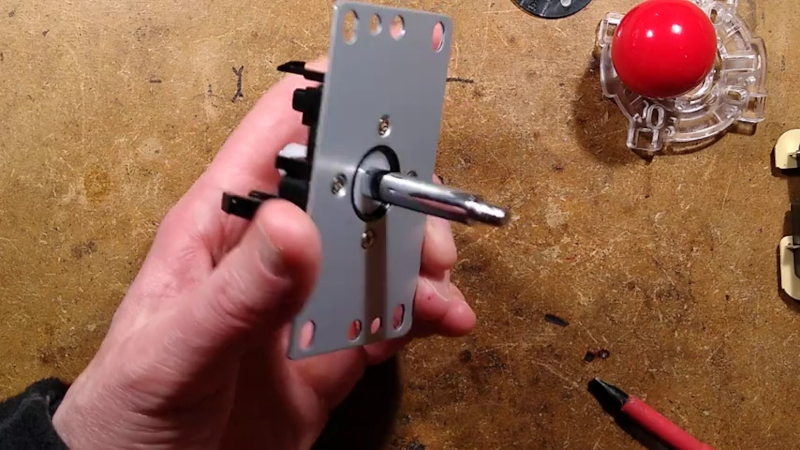If you ever played an arcade game and wondered what was inside that joystick you were gripping, [Big Clive] can save you some trouble. He picked up a cheap replacement joystick, which, as you might expect, has a bunch of microswitches. However, as you can see in the video below, there are some surprising features that make sense when you think about it.
For one, there are plates you can put on the bottom to limit the joystick’s travel depending on the game. That is, some games only want the stick to move up and down or left and right. The knobs are quite nice, and [Clive] mentions the size and thread of the knob with the idea you could use them in different applications. You can also buy replacement knobs if you don’t want to get the whole assembly.
The mechanics are rugged but straightforward. The circuit board is surprisingly stylish but also simple. Still interesting to see what’s inside one of these, even though the schematic is extremely simple.
If you need an excuse to use one of these, how about an arcade table? If you aren’t a woodworker, grab a 3D printer instead.
















Why most of the early coin op games just had those flat buttons that could be abused and not break. I had wished back then that joysticks had switches that would open back up if pushed hard or just tilt you out of the game. Any way done right costs more than buttons. All the way back to Spacewar I have almost never played any non joystick game and that includes D-pads.
Can you imagine the abuse these things take (or have taken over the years)? I think I’ve pounded a few in anger.
back in the 1970’s my first job out of high school was in a video game arcade
these joysticks had a service life of thousands of hours, they didn’t have a circuit board, just the Omron micro switches and the wiring loom was terminated with spade conectors
Wisconsin Corp. in Chicago made most of the joysticks for commercial game manufacturers. They tried to market their joysticks independently but were ultimately unsuccessful. Their joysticks were virtually undestructable.
In the video, Big Clive uses long-nose pliers to wrestle with a circlip he needs to remove, then goes off camera to finish the job. We never see how he accomplishes the task, and when he resumes filming he comments “that was so difficult to get off”. (He calls circlips “Jesus clips” – I learned to call them “dammit clips”).
When I need to remove a circlip, I use a small flat-blade screwdriver that I don’t mind damaging. I place the tip in one of the gaps between the “teeth” which lock the clip into the groove, and pry the clip off the shaft. Sometime only a prying motion is required. On other occasions I use some other tool to stop the clip from rotating while I turn the screwdriver to help lever the clip off.
I use the techniques frequently, and I’ve made them work on even quite small circlips. Quite often they allow one hand enough freedom to stop the clip from flying away in that “dammit” moment.
Where pliers come in handy is when I reinstall circlips. I seldom use pliers for removing them, and when I do, it’s usually in conjunction with a screwdriver prying and/or turning as described above.
Didn’t most of the early arcade games have joysticks that used leaf switches?